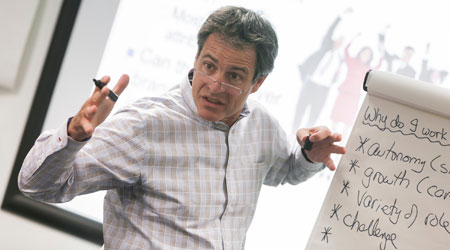
The “Open Doors Policy” or the economic reformations of the late 1970s in China enormously changed the entire economy of the country. The trade reformation which focused on liberalizing the trade which shifted the country a step closer to free market attracted huge foreign capital into the country in the form of FDI since 1978. The huge scarce resources of China had to be utilized soon after the reformations which indeed required huge capital. However,China heavily relied on the external funds in order to promote its manufacturing industry and the financing of newly privatized formerly state-owned companies. Therefore,China’s government issued series of policies which favoured the foreign investors. The inflows of foreign capital in the form of FDI brought in advanced technology, knowledge, management know-how which accelerated the economic growth in China in the last three decades. Since the “Open Doors” policy and trade reformations in the country in 1978, the country has been consistently achieving significant economic growth which averages at 10% of GDP. When the growth rate of China is compared to other developed economies such as USA which has an average of 3% GDP growth in the 100 years and Germany which has an average growth rate of 1.3% of GDP and Japan at 3.85% of GDP in the few decades, China is far ahead (IMF, 2009). However, many western policy makers and commentators believe that the main source of growth of China has been mainly due to FDI inflows which have been encouraged by fixed exchange rate. The source of economic growth of China is derived from three phases of development which are broken down into three periods of years. The first phase of development lasted from 1952-1978 where the Chinese government prioritized the development of heavy industries such as steel, chemicals and machinery. The second…

The term of brand can be defined as “a physical labelling of products, so that consumers are able to identify which firm produces which goods or services” (Soto, 2008, p.8). Alternatively, brand can be defined as “a seller’s promise to deliver a specific set of features, benefits and services consistent to the buyers” (Kotler et al., 2001, p.188). References Kotler, P., Armstrong, G., Saunders, J. and Wong, V. (2001) “Principal of Marketing”, (3rd ed.) Harlow Pearson Education Limited. Soto, T.J. (2008) “Methods for Assessing Brand Value: A Comparison Between the Interbrand Model and the BBDO’s Brand Equity Evaluator Model” Diplomica Verlag

Marketing can be explained as a “set of instructions, and processes for creating, communicating, delivering, and exchanging offerings that have value for customers, clients, partners, and society at large” (Boone and Kurtz, 2013, p.7). The following alternatives of marketing definition have been offered by various authors: “the management process responsible for identifying, anticipating and satisfying customer requirements profitably” (Shaw, 2007, p.1) “an organisational function and a set of processes for creating, communicating, and delivering value to customers and for managing customer relationships in ways that benefit the organisation and its stakeholders” (Ferrell and Hartline, 2010, p.8). References Boone, L.E. & Kurtz, D.L. (2013) “Contemporary Marketing” Cengage Learning Ferrell, O.C. & Hartline, M. (2010) “Marketing Strategy” Cengage Learning Shaw, S. (2007) “Airline Marketing and Management”, Ashgate Publishing

The completion of the Research Report as a part of degree requirements has involved my engagement in a highly challenging and motivating research experience. The following texts represent the skill and learning statement that reflect the implications of the research experience on my personal and professional development. The skill and learning statement includes the implications of interactions with mentor, an analysis of the extent to which research questions have been answered, a brief analysis of interpersonal and communication skills and their relevance to the research, as well as the contribution of the research experience to my professional and personal development. 1. Experiences of interactions with mentor I had chances of meeting my project mentor three times and obtained practical support regarding various aspects of the work during these meetings. Our first meeting was mainly dedicated to clarifying our expectations from the research experience and the discussions took place related to the issues of selection of the research approach and formulation of research questions and objectives. By the time I had a meeting with my mentor for the second time Introduction and Information gathering chapters of the work have been completed and I received detailed feedback for these chapters of the research. Also, discussions were held about data analysis and presentation associated with the project. During the final meeting with my mentor the overall work has been scrutinised and a set of specific points have been mentioned by my mentor. Specifically, my mentor raised a point that my discussions of research findings lacked depth and scale. Then, these points have been addressed and the final draft of the Research Report was completed. I found advices given by my mentor very helpful in terms of increasing the quality of my Research Report and equipping me with knowledge of effectively conducting similar…

This article illustrates a sample personal reflection of the author upon the learning experience and presents critical analysis of the development of the author as a researcher and scholar as a result of conducting this study. The content of the article is divided into three main themes: the development of secondary research skills, the development of primary research skills, improvement of time-management skills, increasing the level of self-confidence. The Development of Secondary Research Skills The author had some basic secondary research skills before engaging in this research; however those skills were greatly improved as a result of conducting the current study. The 21st century has been characterised as the information age, and in this age companies can obtain competitive advantage through analysing information about various aspects of the marketplace, as well as, information related to internal and external factors affecting the company. However, dealing with information from such a perspective requires secondary research skills. Therefore it can be said that the secondary research skills gained by the author during the course of conducting this research will contribute immensely to his career progression in the near future. Specifically, the author gained competency in the following two directions of secondary research: First, prioritising the secondary data. Nowadays a large amount of data is available regarding any business or other subjects in various secondary data sources including books, journals, magazines, newspapers, internet etc. The current research experience has taught the author that it is not physically possible to analyse all the available data related to the research question for obvious reasons. Accordingly, during the literature review stage of the research the author had learned to prioritise the secondary data related to the research questions according to a set of important criteria such as the authority and credentials of the author, date of…

Team life cycle to consist of the following stages: forming, storming, norming, performing, adjourning. All of these stages were passed by the team during the course of preparing the presentation and presenting it. 1.Forming. Five team members were identified. All of the members of the team had known each-other before the team project, however, team presentation had given team members a chance to know each other closer. 2. Storming. There were some arguments within the team at the beginning of the project when the team members were dividing the project into parts and distributing these parts to the team members. Moreover, opinions within the team differed about what company needed to be selected. However, disagreements were not serious, without any emotions attached, and came as a natural part of the project. 3. Norming. Towards the end of the first group meeting major points of argument were settled, company for the presentation was selected, and roles and responsibilities were divided among team members with everybody’s consent. 4. Performing. The team had several meetings and during each meeting a specific part of the work was completed according to the plan that has been formulated during the first meeting. Specifically, in this stage areas within the practice of Viva managers were formulated that needed to be improved as a result of the training and development program. Also, various training and development methods were reviewed to identify which of them were the most suitable to be integrated into Viva training and development program. As a result of the analysis and heated discussions within the team, it was identified that time management and team working were the skills that needed to be developed in Viva supervisors and managers. Accordingly, relevant training and development elements were selected presentation materials have been prepared. Roles within the…

Viva is a leading provider of risk, savings and investment management products based in UK, with operations also in France, Germany, Netherlands, USA, Gulf and India. Being established in 1836, the company serves nearly seven million customers worldwide. Viva has organised its foreign operations efficiently, taking into account local specifications. For example, the company offers Takaful products in Gulf countries, that is financial products that have been devised according to Sharia Islamic laws, due to the fact that local customers are very sensitive about these issues. Also, Viva has engaged in joint-ventures in India with Bank of Baroda, and Andhra Bank. This article briefly introduces Viva Company and discusses the various elements of development scheme that group has proposed for the company in the form of presentation. Moreover, additional development elements are included in the article, and the rationale behind the choice of each element is explained in detail, listing their advantages, as well as disadvantages. Training and Development Schemes for Viva Initially the purpose of training and development scheme for Viva managers have been identified. The primary purpose for the scheme has been found as equipping Viva managers with necessary skills and knowledge so that they can manage the business globally in the most efficient manner. Moreover, the following purposes of training development as proposed by Beardwell et al (2004) were planned to be achieved for Viva as a result of the project: a) Maximising productivity and service provision for the company b) Developing the adaptability for the workforce c) Developing the Viva as an organisation as a whole d) Increasing job satisfaction, motivation and morale of Viva workforce e) Improving standards and safety at work f) Promoting the Better utilisation of other resources g) Standardisation of work practices and procedures Wood (2009) divides trainings methods into two categories: traditional…

The European Business Environment module coursework was a good learning experience for me in many aspects. Among many positive benefits it positively contributed to my secondary data research techniques, improved my time-management skills and made me a more industrious student. However, I encountered with a range of issues at various stages of completing the assignment. Specifically, there was a problem with the lack of trustworthy secondary data resources, since most of the materials found on-line arose my suspicion regarding their validity as references. The issue was dealt with through more visits to the library than was initially planned. If I were to complete the same assignment one more time I would definitely start my visits to libraries weeks earlier than I did. This would have enabled me to avoid last-minute hassles, and would ensure the greater scope and depth for my research. During completion of the assignment I found easier to perform at argument and application learning outcome due to my practicability and an analytical mindset towards various issues. Moreover, I think I did well in communication learning outcome as well, because the whole text was revised many times in order to increase its standard. The achievement of learning outcome I was not satisfied with is a research. Specifically, my references include only ten books and one internet web-site. If I had started my research process earlier references could have included relevant magazines and journals as well, and thus the overall validity of the research could have been increased. I cannot state that I have performed to the best of my ability for this specific assignment. The primary reason was that I had started to write the assignment much later than I have should and this had affected many aspects of the work. But the most important point is that …
By John Dudovskiy
Category: Personal reflection & development

Intensifying level of competition in job markets due to the increasing forces of globalisation has increased demand for the population of employable age in general, and university graduates in particular (Armstrong, 2010). Therefore, today employees have to be more proactive towards their careers fully utilising a range of available tools such as career mapping, career plan, and personal development plan. This article illustrates a personal career management plan for the author of the report. The report starts with discussing the dream position of the author and highlighting the main skills and qualities needed to be successful in this position. This is followed by a brief explanation of career mapping and planning methodology. Detailed explanations of chosen career path to reach the dream job have also been provided within the report, as well as, relevant career plan and personal development plan has been supplied. Moreover, analysis of major obstacles and challenges the author is likely face in the way of progressing towards the dream job has been included with a particular focus on challenges related to dealing with an international team. The article is concluded by drafting recommendations to future graduates on a different career they could have in a given field after they graduate. Dream Position: HRM Executive with a Multinational Corporation Human resources management (HRM) is a field of professional interest for the author because being employed in this field involves working and interacting with people different character and various backgrounds. Moreover, career in HR can be rewarding in many other ways, such as great influence on various aspects of organisation, assistance in personal and professional development of the workforce, and influence and participation in strategic level decision making. However, operating as a successful HRM executive for a multinational corporation requires a certain set of skills and competencies.…
By John Dudovskiy
Category: HRM

a) What learning have you gained from the study of international marketing and how this learning has enabled the development of your analytical and behavioural skills. Support with actual examples. The study of subject of international marketing has positively contributed to my knowledge in many ways, as well as it has increased a range of my skills and capabilities. To be more specific, my knowledge was increased in a way that I was able to analyse a wide range of marketing issues not only on the scope of a single market or country, but also from a global perspective. My skills and capabilities that were developed and improved during international marketing classes and seminars include communication skills, global viewpoint, analytical skills, cross-cultural skills and others. First of all, from the beginning of the classes I became able to distinguish between traditional marketing within a specific market or a country and a form of new marketing that did not recognise borders between countries i.e. I came to appreciate the scope and depth of international marketing. Moreover, various factors affecting international marketing such as global cultural environment, global business customs, international political and legal environment were taught during classes in detail that updated my knowledge about marketing, and as a result I also became aware with a range of new issues affecting businesses in general, and marketing in particular that were resulted from globalisation. One of the important factors, in my opinion, that positively contributed to the learning process was the high level of professionalism of lecturer whose teaching style was efficient in a way that each and every concept and idea was explained by referring to real-life business examples. I personally found global marketing research more challenging than marketing research that is conducted within a particular market. Because in case of…
